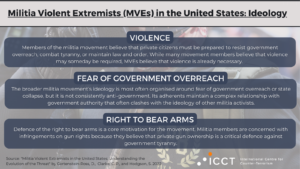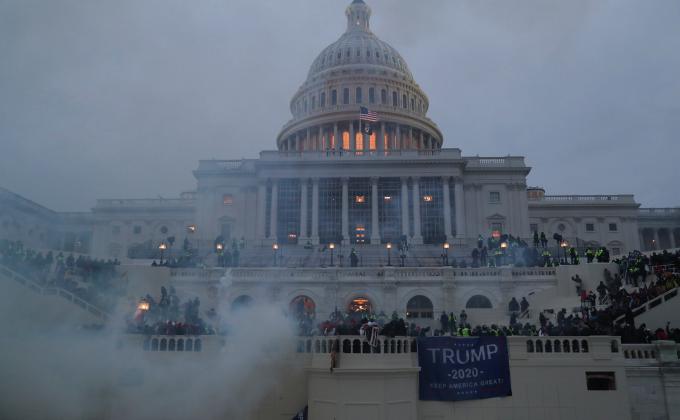
Militia violent extremists (MVEs) pose a growing threat within the United States. MVEs were the most prominent and well-organised participants in the January 6, 2021 attack on the US Capitol and have plotted numerous acts of lethal violence against law enforcement, government officials, and civilians in the past decade. MVEs are motivated by a belief that private citizens must use violence to resist government overreach, combat purported tyranny, or maintain law and order. While participants in the broader militia movement embrace similar beliefs, MVEs are distinguished by their willingness to carry out violence.
MVEs typically organise in small local or regional militias, though many movement participants do not affiliate with a specific organisation. The modern militia movement developed at the end of the twentieth century, but social media has transformed the movement's structure and fuelled its growth. Movement members have organised loose umbrella networks at the national level, most notably the Oath Keepers and Three Percenters, while others have coalesced around specific memes or ideas, including the accelerationist Boogaloo movement, border defence, opposition to federal stewardship of public land, and opposition to COVID-19 public health measures. MVE violence has been similarly diverse. In addition to the attack on the US Capitol, MVEs have attempted to kill law enforcement officers, plotted to kidnap government officials, and engaged in multiple standoffs with law enforcement in response to government action.
Because the MVE movement is largely domestic, US policymakers have several options for countering this threat. The US government can limit radicalisation through transparency around its domestic activity, thereby countering the anti-authority sentiments and conspiracy theories that fuel the movement. Further, federal legislation targeting militia activity and improved counter-extremism training can provide law enforcement with the tools necessary to address MVE-linked criminal activity.
This publication represents the views of the author(s) solely. ICCT is an independent foundation, and takes no institutional positions on matters of policy unless clearly stated otherwise.
Photocredit: Robert P. Alvarez/Shutterstock








